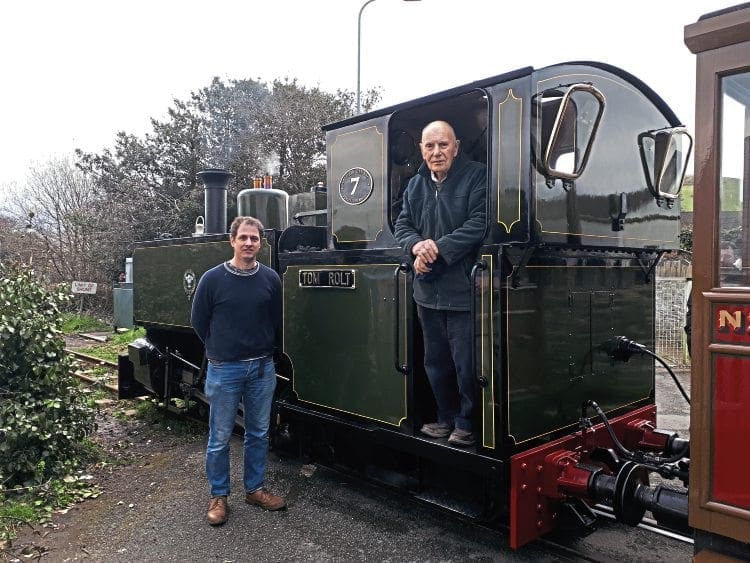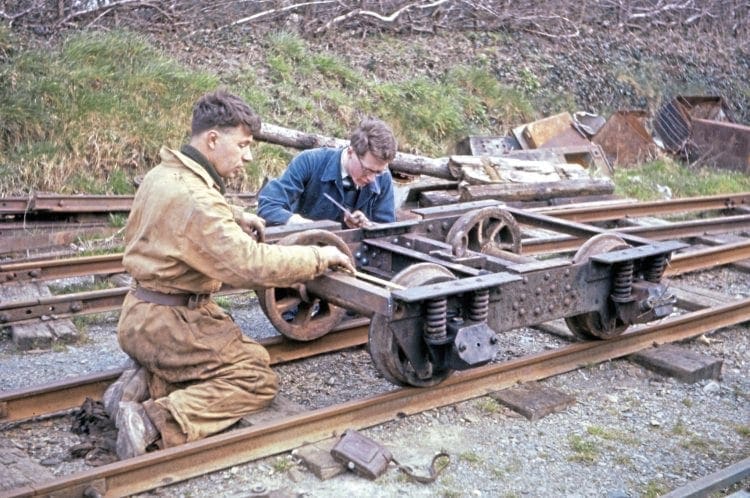Nicola Fox meets John Bate, an octogenarian Talyllyn Railway volunteer and employee, who has spent nearly all of his adult life working at the pioneering Welsh narrow gauge line, eventually rising up to the position of chief engineer.
The Talyllyn Railway (TR) runs from Tywyn on the mid-Wales coast 7¼ miles up the Fathew Valley and is the world’s first preserved railway. This year marks 67 years since the formation of the society, and one current volunteer has been involved since that very first year.
John Bate first encountered the railway when he was four years old, describing being lifted onto someone’s shoulders to peer above a hedge and watch the train pass by on the hillside above. The red livery and mix of carriages and trucks was a rare sight to someone used to seeing the green Southern liveries or chocolate & cream of the GWR. Little did he know at that age the impact this narrow gauge line would have on his life.

It’s a grey day in late-April when we meet on Pendre station, in sight of the loco sheds and works, for a chat about John’s many years first as a TR volunteer, then later employee, and finally back to volunteer in his retirement years.
Enjoy more Railway reading in the monthly magazine.
Click here to subscribe & save.
Despite his seniority, John has the gait and wit of a young man with a wry chuckle and phenomenal recall, remembering dates and events as if they happened yesterday.
His interest in narrow gauge railways was sparked in 1943, when aged 13, he came across the Ravenglass & Eskdale Railway by chance on an excursion in Cumberland and thought: “I must dig up some more information on this, it looks rather fun”. Until this point he notes that he didn’t have specific interest in steam engines: “I was a small boy, I was interested in ships, planes, engines, even holes in the ground!”
In fact, geology was one of John’s key interests, leading to his career as a civil engineer, which occupied him for many years. Indeed that career in itself is fascinating, including the building of the M1, relaying runways to accommodate the vast weight of Vulcan bombers, and a track quadrupling contract for Southern Region in Kent.

It’s easy to become captivated by his tales, as he talks, his quiet voice firm and his enthusiasm for his subjects evident. Indeed John’s civil engineering skills were vital to the railway from the very early days and the history of the Talyllyn – and by extension the rest of preservation – could have been very different without his involvement.
In 1947, aged 18, he was accepted into the Royal Engineers, though he eschewed officer training, having been inspired by a childhood ride on a bulldozer during the post-war demolition of anti-tank defences by the Royal Engineers on his school grounds. “I didn’t want to be an officer; I wanted to learn more about bulldozers.”
That same year he was to have his first ride on the Talyllyn, then under the ownership of
Sir Henry Haydn Jones, but his involvement didn’t begin until the formation of the preservation society four years later.
Read more and view more images in the September issue of The RM – on sale now!




